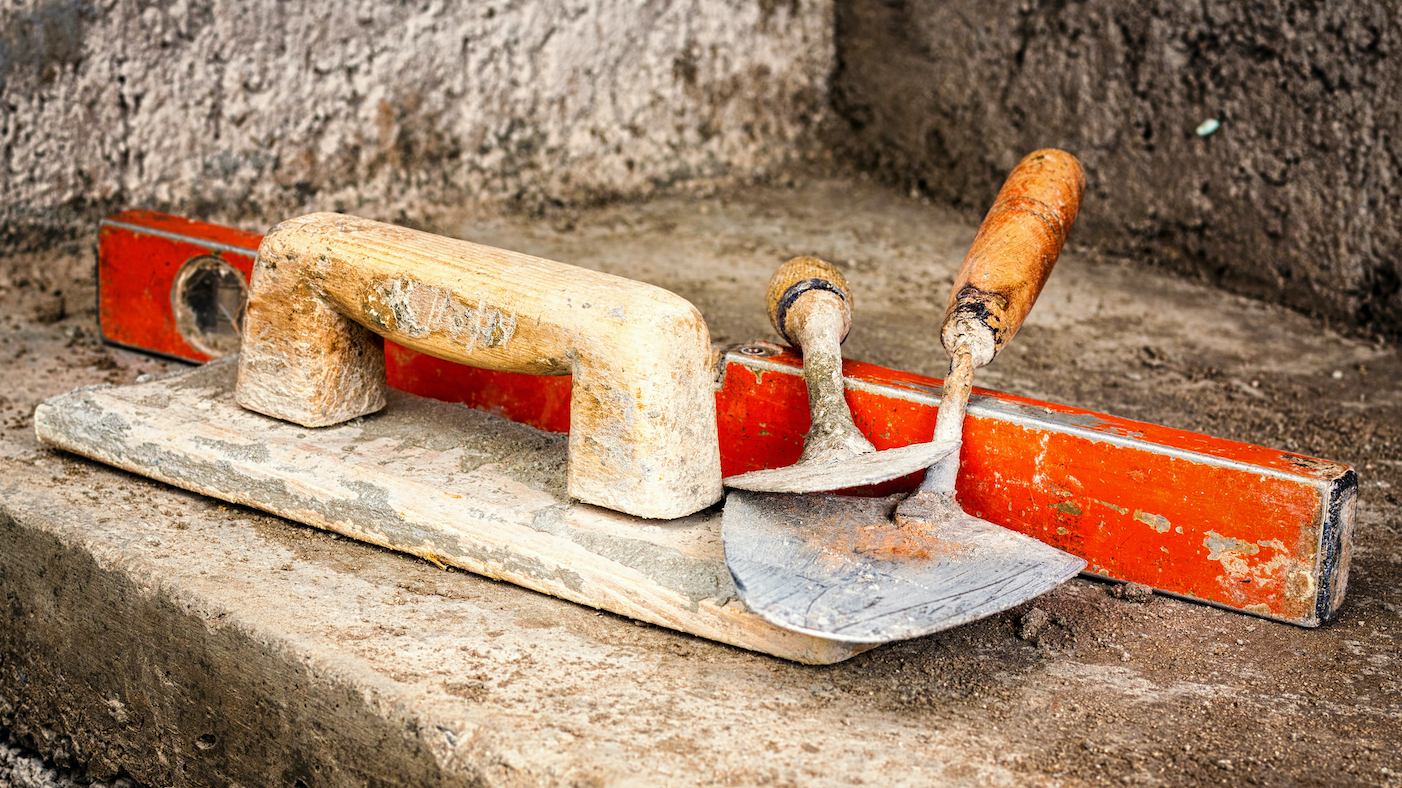
Is heritage conservation in crisis?
DBR’s Adrian Attwood discusses the importance of moulding a new generation of skilled craftspeople to protect heritage assets
The construction industry is at a crossroads, with an acute shortage of new talent, particularly in specialist roles such as historic building conservation and traditional craft skills.
Year-on-year we are seeing fewer young people entering the profession, while at the other end of the spectrum, skilled stonemasons, leadworkers, slaters, conservation bricklayers and gilders are retiring – leaving a looming skills gap.
This has been further exacerbated by Brexit-related restrictions, preventing foreign talent from coming in, and to a lesser extent, people not returning to the UK post-pandemic.
Not only will this place historic buildings and monuments at greater risk of disrepair, but it also runs the risk of time-honoured crafts being lost forever.
Now is the time for the construction industry, as well as educators and policymakers, to cultivate the next generation of talent.
Getting our house in order
The recent visa rule relaxation for skilled trades will undoubtedly be welcome news for construction and, at the very least, provide some short-term relief to the sector as a whole.
However, it’s uncertain whether this influx will trickle down to some of the more specialist professions that make up the conservation construction niche – everything from stonemasonry and joinery to wrought ironwork and leadwork.
Perhaps a little overblown, but former minister John Hayes recently made a valid point, emphasising the need to dig and fill a home-grown talent pool of our own, creating a specially trained domestic workforce to complement that coming in from abroad.
Many teachers, parents and children see these professions as dead-end career paths with low prospects. They couldn’t be more mistaken
Last week’s announcement by the Hamish Ogston Foundation, to fund new apprenticeships to the tune of £29 million, is outstanding and a necessary shot in the arm for the education system.
Institutional roots
But first, we need to tackle the institutional roots of the problem, which I believe are twofold:
- The education system, particularly at secondary level, which fails to promote or support careers in conservation and traditional craft skills;
- The heritage construction niche itself, which is not doing enough to champion the work it does or to invest time and resources in succession planning.
It’s a challenging situation and one that is, unfortunately, putting our skilled workforce at risk. Bluntly, if the situation continues, we may well lose these time-honoured crafts forever.
Personally, I would like to see more of the UK’s young people made aware of the myriad skilled professions within conservation and the rewarding career paths on offer.
However, it can only happen if we as an industry come together with educators to engage with them.
Going public
The good news is that there’s still time to take matters into our own hands, inspiring young people and ensuring we have a strong pipeline of skilled workers to deliver an increasing amount of restoration projects for years to come.
We’re starting to wake up to the scale of the issue, at least at a sector and policy level, and there are tentative plans being developed to address long-term shortages.
What we really need now is a public discourse to bring this issue to the mainstream.
Sadly, many teachers, parents and children see these professions as dead-end career paths with low prospects. They couldn’t be more mistaken.
Let’s shout about it
Many readers will have spent the majority of their careers in construction and will know what a worthwhile one it is, not just financially but socially too.
Heritage construction holds a diverse range of rewarding roles, from small-scale maintenance to the complete restoration of monuments.
It also offers exciting opportunities to collaborate with architects and engineers working on site, learning from a variety of disciplines.
Much of the work carried out on heritage sites is done by hand, replicating original methods of building before the invention of modern mechanical tools.
It is a highly creative process, relying on intuition, delicacy and the human touch. It is also hugely rewarding, allowing workers to see projects through from start to finish.
However, the field has also expanded to include modern technologies to coincide with traditional skills such as photogrammetric surveys, 3D scanning and drone surveys.
Perhaps most importantly, heritage construction involves maintaining and upholding the historic fabric of the nation, sustaining it for future generations.
Get inspired
We need to get to these career influencers and win over their hearts and minds at the earliest possible juncture.
As well as getting young people inspired, it will be important for the industry to commit substantial inward investment to train the future generation of skilled tradespeople.
This requires a structured framework. While many routes into the profession exist, they are siloed and fragmented.
The Year of the Master Craftsperson is an opportunity to inspire more young people to enter the conservation sector, simultaneously protecting our heritage and championing current practitioners
Joining them up would create a more cohesive and compelling voice, and that’s what has inspired us to launch a campaign, set to run over the next academic year – the Year of the Master Craftsperson (YMC).
Year of the Master Craftsperson
YMC is an opportunity to inspire more young people to enter the conservation sector, simultaneously protecting our heritage and championing current practitioners.
It’s starting to take shape, with many leading professional bodies, specialist educational institutions and firms keen to support the initiative, along with philanthropists such as Hamish Ogston.
Of course, there’s a danger this could become another talking shop, of which there are too many.
We want to see a direct correlation of our activity with an increased number of applications, whether to apprenticeships or courses run by the likes of Building Crafts College and City & Guilds.
It is about firms taking action on the ground, too. We’re already walking the walk, partnering with QEST on a scholarship we hope will serve as an example of how individual firms need to take matters into their own hands, passing down their expertise to the next generation.
We hope training schemes like this one will open the door of opportunity to youngsters nationwide, particularly those from less advantaged backgrounds who may not have previously had access to this professional route.
Less talk, more action
Ultimately, we want to protect and preserve the legacy of our own sector, futureproofing it for years to come.
It is up to us as responsible built heritage professionals to ensure our country’s heritage is protected, and that the sites we have come to know and love throughout our lives can be appreciated and enjoyed by future generations.
We can only do this if we join forces to directly engage and communicate with Britain’s youth, drawing their attention to the fantastic apprenticeships and targeted vocational education and training schemes available.
The Year of the Master Craftsperson will be a great way to achieve this, joining up an industry ambition that we know is there under one umbrella, bringing like-minded practitioners together and effecting positive change.
Adrian Attwood is executive director at DBR
Comments
Comments are closed.







Many years ago now (but within a working lifetime) English Heritage stopped directly employing its own heritage buildings skilled workforce and privatized what they had.
Did these privatised businesses continue to train their workforce at a replacement rate?
Can the skills shortage be traced back to this privatisation?
Along with the lack of skilled craftsmen we have a lack of building owners with sufficient money to have the works correctly designed, supervised and completed. Too many heritage building owners rely on unqualified and inexperienced designers and builders who invariably treat old buildings as if they’re modern. And who can blame the owners when the cost of proper conservation design and crafts is much higher than off-the-shelf modern solutions?
Building owners really need a financial incentive to wait for the right designers and craftsmen and to pay them the extra required; and the easiest way to do this is through the taxation system – where we can get VAT exemption for heritage buildings we’ll begin to redress the balance.
Thanks to Adrian for this perspective that is so uplifting, and the idea and implementation of the “year of the master craftsperson.” This seems like a good idea for other European countries, as many of them are also dealing with a view of crafts employment as boring, mainly by a large contingent of young people, and exacerbated by the increasing focus of society on the movement of work, daily life and practices into the electronic web. As to the value in monetary terms for conservation and sustainable restoration of the built environment’s historical value and structural/architectural integrity: The built environment has intrinsic value because extant structures are literal records of what apparently works, in terms of dealing with different taphonomic process and human attempts at repair or dis-repair, and further, has value for sustainability in that there is less embodied/embedded energy in extant structures put to good use, thus this reduction in CO2e emitted can also be monetarily valued, and finally, I would think that detailed analyses of restoration projects of historically significant buildings in Europe/Britain/Ireland, even those not listed, if performed using dynamic net present value modelling, would very likely reveal that saving and conserving extant buildings, with traditional crafts skills, can be cost effective, looked at from a 100 year or more perspective. The EU directive on the energy efficiency of existing buildings toward 2030, 2033, and 2050 will intensify the need for these “warm hands” skills and people that work well in multi sectoral teams, and hopefully the UK government will be inspired to take up this challenge for the UK building stock, to use traditional skills and traditional tools/techniques, instead of just gluing more insulation to the facade and installing heat pumps….